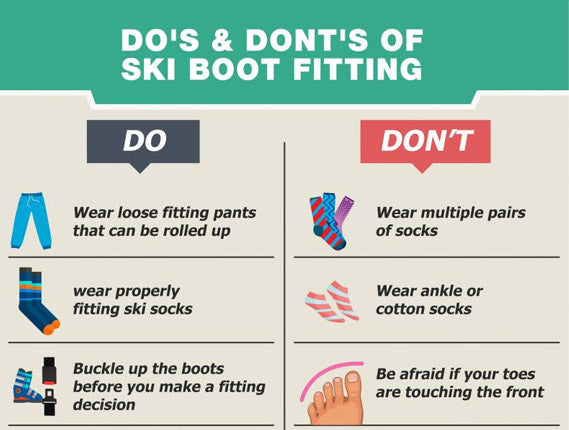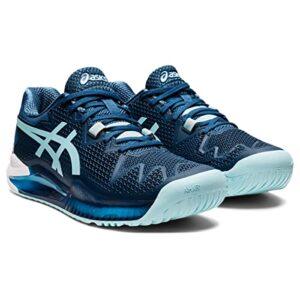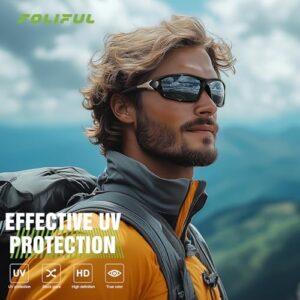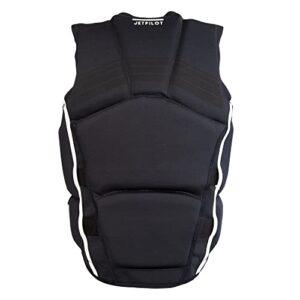Are you wondering if your ski boots should feel tight or just comfortably snug? Getting the right fit can make all the difference between an amazing day on the slopes and a painful one.
If your boots are too loose, your feet will slide around, causing blisters and losing control. But if they’re too tight, discomfort can ruin your focus and fun. So, how tight is tight enough? You’ll discover why snug ski boots are key, how to find the perfect fit for your feet, and tips to avoid common mistakes.
Keep reading to make sure your boots help you ski better, not worse.

Credit: www.youtube.com
Ski Boot Fit Basics
Ski boots need to fit well for comfort and control on the slopes. The right fit helps you ski better and avoid pain. Understanding how ski boots should feel is important before buying or renting a pair. Ski boots are different from regular shoes and require a snug fit to perform well.
Choosing the correct size and fit can prevent foot soreness and improve your skiing experience. It is not about being painful but about being secure. Below are key points to know about ski boot fitting.
Why Snugness Matters
Ski boots must hold your feet firmly to control your skis. A loose boot lets your foot move, causing blisters and less control. A snug fit stops your foot from sliding inside the boot. This helps with precise turns and balance. Tight boots improve power transfer from your legs to the skis. Without snugness, skiing becomes harder and less safe.
Common Fit Misconceptions
Many think ski boots should feel loose like regular shoes. This is wrong; loose boots reduce control and cause pain. Some believe toes must not touch the front of the boot. Actually, toes may touch at first but move back when you bend your knees. The heel must fit tightly in the heel pocket to avoid lifting. Comfort grows as boots warm up and mold to your feet. Beginners may want a softer fit, but snugness remains key.
Mondo Point Sizing System
The Mondo point system measures foot length in centimeters. Ski boots use this system, not regular shoe sizes. To find your Mondo size, place your foot on paper against a wall and mark the longest toe. Measure from the wall to the mark in centimeters. This number is your Mondo size. It helps find boots that fit your foot length exactly. Street shoe sizes are usually larger than ski boot sizes.
Finding The Right Tightness
Finding the right tightness in ski boots is key for both comfort and control. Boots should feel snug but not painful. Too loose, and your foot slides inside, causing blisters and less control. Too tight, and blood flow can be cut off, leading to cold or numb feet. The goal is a fit that holds your foot firmly while allowing some movement for comfort during skiing.
Pay attention to how your foot feels after some time in the boots. The fit will change as the liner warms and molds to your foot shape. Let’s explore how to balance tightness in different parts of the boot for the best experience.
Balancing Comfort And Control
Ski boots must be tight enough to control your skis precisely. A loose fit reduces your ability to steer and react quickly. At the same time, boots should not cause sharp pain or numbness. A good fit feels firm but lets your foot breathe and move slightly. Testing the boots by flexing forward and walking helps find the right balance.
Heel Pocket Importance
The heel pocket holds your heel firmly in place. A secure heel prevents your foot from sliding up and down inside the boot. This reduces friction and improves control. When you first try on boots, your toes may touch the front. Flexing your knees forward will push your heel back into the pocket. The heel should feel locked without pinching or pressure points.
Toe Space And Foot Position
Your toes need a small space to wiggle but not slide forward. Too little room causes cramping and pain. Too much space lets your foot move, reducing control. The toes should gently touch the boot’s front when standing upright. As you flex forward, your foot slides back, creating a tiny gap at the front. This shows a proper fit and good foot position.
Fit Differences By Skill Level
Fit differences in ski boots depend greatly on your skill level. Skiers at various stages need different types of fits to match their abilities and comfort needs. The right fit supports control and reduces foot pain on the slopes. Understanding these differences helps you choose the best boot fit for your skiing style.
Beginner Fit Preferences
Beginners often prefer a softer and more comfortable fit. Their boots should allow slight movement to avoid pressure points. A snug but not tight fit helps beginners stay relaxed and focused. Too tight boots can cause pain and distract new skiers from learning. Comfort is key to build confidence on skis.
Advanced Skier Requirements
Advanced skiers need a much tighter fit for better control. Their boots must hold the foot firmly to transfer movements precisely. A tight fit reduces unwanted foot movement inside the boot. This fit improves responsiveness on steep slopes and fast turns. Advanced skiers accept less comfort for higher performance.
Adjusting Fit For Performance
Adjusting boot fit depends on skiing style and conditions. Some skiers loosen boots slightly for long, easy runs. Others tighten boots for aggressive skiing or racing. Custom liners and shell modifications help achieve the perfect fit. Proper fit adjustment balances comfort and control for every skier.

Credit: www.utahskigear.com
Measuring Your Foot For Ski Boots
Measuring your foot correctly is the first step to finding ski boots that fit well. Proper measurement ensures comfort and control on the slopes. Ski boots use a different sizing system than regular shoes. Accurate foot length helps you choose the right Mondo point size. This prevents buying boots that are too tight or too loose.
Simple methods can help measure your foot at home. Understanding how street shoe sizes compare to ski boots avoids confusion. Also, athletic shoe sizes differ from ski boot sizes and must be considered.
Using The Wall And Paper Method
Place a sheet of paper on the floor against a wall. Stand with your heel touching the wall. Mark the longest part of your foot on the paper. Measure from the wall to this mark in centimeters. This length is your foot size for ski boots. Repeat for the other foot. Use the longer measurement to pick your boot size.
Converting Street Shoe Size To Ski Boot Size
Street shoe sizes do not match ski boot sizes directly. Ski boots use the Mondo point system, based on foot length in centimeters. Usually, ski boots run smaller than street shoes. A street shoe size is often one or two sizes larger. Always measure your foot length for accuracy. Use size charts to convert your street shoe size to ski boot size.
Why Athletic Shoe Size Is Different
Athletic shoes fit differently than ski boots. Athletic shoes have more padding and flexibility. Ski boots need to be snug for better control. Athletic shoe sizes can be misleading for ski boot fitting. Rely on foot length, not athletic shoe size, for ski boots. This helps avoid boots that are too loose or too tight.
Breaking In And Testing Fit
Breaking in ski boots and testing their fit is crucial for comfort and control on the slopes. Proper fit helps you ski better and prevents pain. Ski boots feel tight at first but will adjust as you use them. The process involves allowing your heel to settle, flexing your knees, and wearing the boots before skiing. These steps ensure the boots fit snugly without causing harm.
Allowing Heel To Settle
At first, your toes may touch the front of the boot. This is normal and means your heel has not settled yet. As you flex your knees and move, the heel moves back into the heel pocket. This shift creates a snug fit around your heel. It reduces foot movement inside the boot, improving control and comfort while skiing.
Flexing Knees To Adjust Fit
Bend your knees forward while wearing the boots. This action helps your foot slide back naturally. It also shapes the boot to your foot’s position when skiing. Flexing knees mimics your skiing stance and reveals if the fit is too tight or loose. A correct fit feels snug but does not cause sharp pain or numbness.
Wearing Boots Before Skiing
Wear your ski boots at home before hitting the slopes. This breaks in the liners and softens the shell slightly. It also lets you spot pressure points early. Walk around for 30 minutes to an hour in your boots. This practice helps the boots mold to your feet and gives you a better idea of comfort during skiing.
Tips For Choosing The Right Boot
Choosing the right ski boot is key for comfort and control on the slopes. The fit affects your performance and how much you enjoy skiing. Follow these tips to pick boots that feel snug but not painful. Each factor plays a role in finding the perfect match for your feet and style.
When To Size Up Or Down
Boots should fit tightly but not squeeze painfully. If your toes curl or feel numb, try sizing up. Too much space causes your foot to move and lose control. If boots feel loose, size down for a better grip. Remember, ski boots use the Mondo point size, based on foot length in centimeters. Always measure your feet before choosing.
Considering Boot Flex And Last
Flex refers to how much the boot bends forward. A softer flex suits beginners or lighter skiers. Stiffer boots give more control for aggressive skiing. The last is the width of the boot’s interior. Narrow lasts fit slim feet better, while wider lasts fit broader feet. Choose flex and last based on skill level and foot shape.
Consulting Experts And Bootfitters
Visit a professional bootfitter to get the best fit. Experts measure your foot and analyze your skiing style. They can adjust liners and shells for comfort and performance. A good bootfitter helps avoid pain and improves your skiing experience. Don’t skip this step if you want boots that fit perfectly.

Credit: www.onthesnow.com
Frequently Asked Questions
Is It Better For Ski Boots To Be Tighter Or Looser?
Ski boots should fit snugly to prevent foot movement and improve control. They must feel tight but not cause pain or soreness. Too loose boots reduce performance, while too tight boots cause discomfort. Aim for a secure, comfortable fit for the best skiing experience.
Is It Better To Size Up Or Down In Ski Boots?
Choose ski boots that fit snugly, not too tight or loose. Size based on foot length (Mondo point). Advanced skiers prefer a tighter fit; beginners may size up slightly for comfort. Avoid boots causing pain or numbness. Proper fit ensures control and reduces foot soreness while skiing.
Should You Be Able To Wiggle Your Toes In Ski Boots?
You should have limited toe wiggle in ski boots. Toes must feel snug but not cramped. This ensures control and warmth while preventing pain.
How To Tell If Ski Boots Fit Correctly?
Ski boots fit correctly when snug without causing pain. Toes may touch initially but heel should settle firmly. Flex knees forward to check heel pocket fit. Boots should prevent foot movement, ensuring control and comfort during skiing.
Conclusion
Ski boots need to fit snugly for better control on the slopes. They should feel tight but not painful or sore. A proper fit keeps your foot from moving inside the boot. This reduces discomfort and improves your skiing performance.
Remember, sizing depends on your foot length, not your regular shoe size. Beginners might prefer a bit more room for comfort. Advanced skiers often choose a tighter fit for precision. Always try boots on and move around to find the right balance between snugness and comfort.

Madison Clark is a footwear expert and the voice behind MyStyleGrid.com. She specializes in honest shoe reviews, style tips, and practical guides to help readers find the perfect pair for any occasion. With years of experience in blogging and content creation, Madison makes footwear knowledge simple, stylish, and easy to follow.







